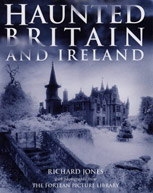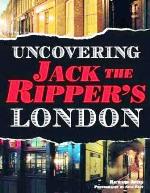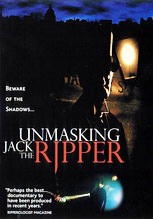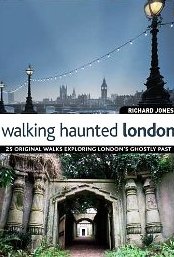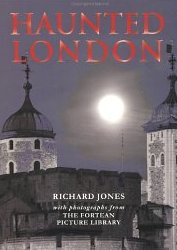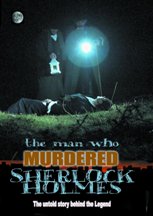AN ECCENTRIC HAUNTED INN
The Highwayman, Sourton, Devon
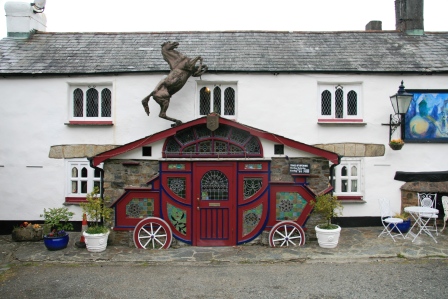
The Highwayman Inn, Sourton, Devon
The Highwayman enjoys a lonely and dramatic setting. It stands opposite the pretty little church of St Thomas Becket, beyond which the dark bulk of Dartmoor looms against the scudding clouds, bleak, brooding and thoroughly menacing.
Until the mid 20th century this little pub was known as The New Inn, although it was anything but, since the building dates from the 13th century.
In 1959 the dilapidated property came into the possession of John Buster Jones, a Welsh visionary whose previous achievements had included running away to sea when he was 14, and representing Wales at boxing and distance running.
He and his wife, Rita, changed the pub's name to The Highwayman, and set about transforming the modest roadside watering hole into one of the most unusual and imaginatively furnished hostelries in the whole of England.
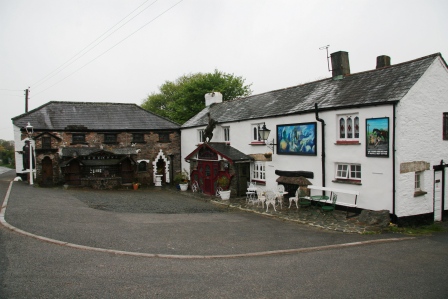
The Highwayman
Exterior View
What Buster Jones created was a fairy-tale cottage cum Aladdin's cave, with nautical and ecclesiastical themes thrown in for good measure.
He dragged tree stumps from nearby woodland and fashioned them into bar tops, or used them as massive beams to prop up ageing ceilings.
The old Okehampton-to-Launceston stagecoach formed a suitably eccentric entrance lobby.
Old spindles, battered tankards, cartwheels, lanterns and all manner of other bric-a-brac came to occupy every spare inch of wall, beam or ceiling.
Timbers and fittings from old ships, including the intricately carved door of the whaler Diana that ran aground in the Humber in 1869 were used to create the remarkable Galleon Bar, which has the below-decks ambience of an 18th-century pirate ship.
Buster's daughter, Sally, and her husband Bruce, who take great care to ensure that his legacy remains intact, now run the inn.
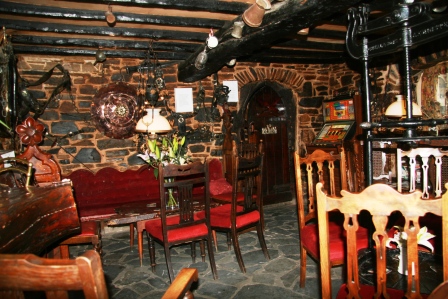
Inside the Highwayman Inn
They have long grown used to sharing their bequest with one or two spirits of an ethereal nature who drop in every so often to keep an eye on the comings and goings.
Much of the ghostly activity occurs in the Galleon Bar, and it is mooted that it may be related to the eerie-looking door from the Diana.
Between 21 September 1866 and 17 March 1868, 13 members of the ship's crew died when she became trapped in Arctic pack ice. "We will not have a moment' s peace of mind or body so long as we are in this awful ice," one sailor wrote in his log.
When the remaining crew finally managed to force the crippled vessel across the Atlantic to reach Shetland, the first reporter to board her was appalled by the sight that met his eyes. "Coleridge's Ancient Mariner might have sailed in such a ghastly ship," he wrote, "the main deck a charnel house not to be described."
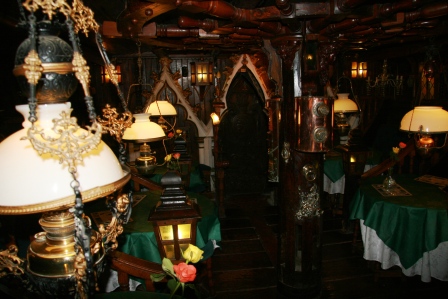
The Galleon Bar
Highwayman Inn
Several psychic investigators have suggested that the apparitions seen in the Galleon Bar are the long-dead mariners, whose spirits have remained earthbound in the fabric of the door.
Such a theory might sound a little far-fetched, but a definite air of melancholy emanates from the relic.
Other phenomena experienced here have included items being moved around by invisible hands, orbs of light hovering in mid air, and a ghostly figure in a feathered cap who drifts silently around, no doubt content to roam the eclectic interior of such a characterful and hospitable place as the Highwayman Inn in Sourton, Devon.

